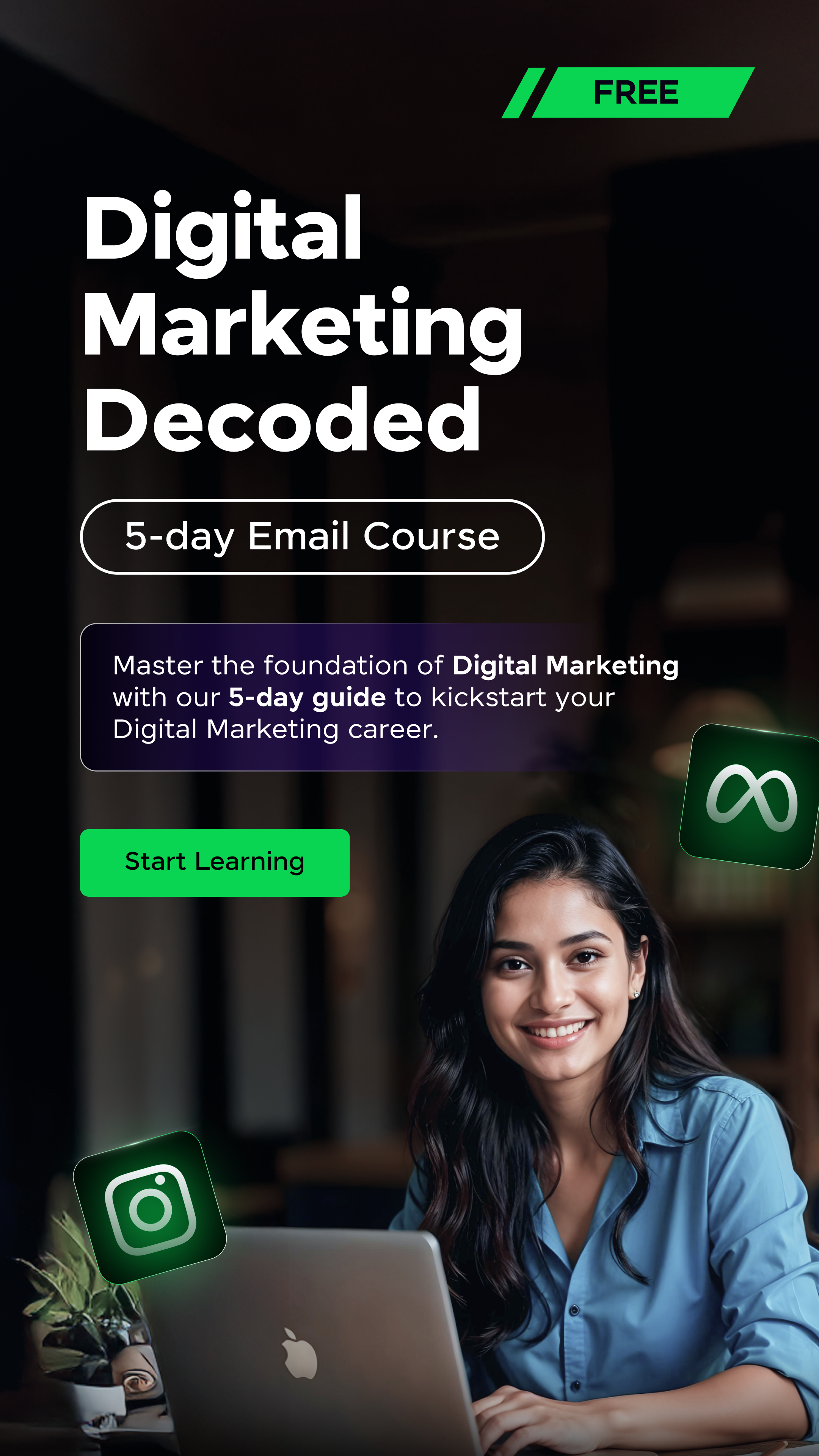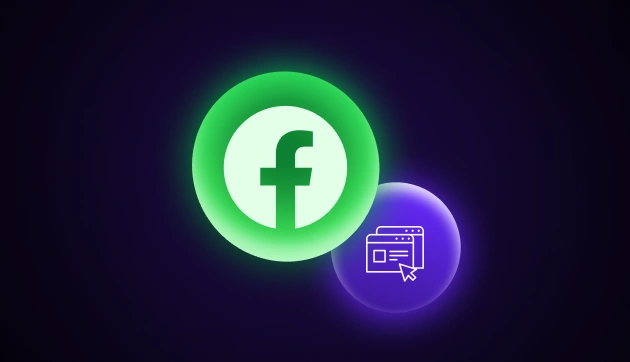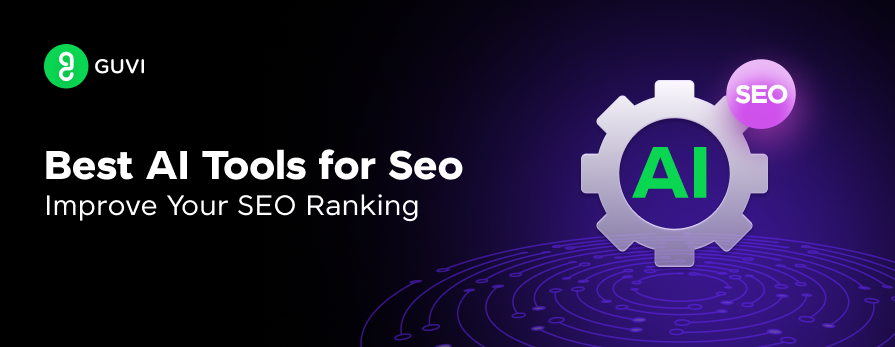
Top Lead Generation Strategies in 2025 with Real-life Industry Examples
Jan 30, 2025 6 Min Read 3321 Views
(Last Updated)
Lead Generation is an integral part of any business and effective digital marketing strategy. Lead generation is an all-encompassing plan for getting your target customers to share their credentials with you and opt-in for your marketing communication.
Remember, the last time when you were bird-eying a website, and they asked you to fill out your name, contact number, or email – that right there is lead generation. (after you accepted those pesky cookies, of course)
Since getting your target audience’s attention these days is like trying to herd a snobby cat who doesn’t want to play; that’s why having a rock-solid lead generation strategy is your best shot at success. In this guide, we’ll dive into top-notch lead generation strategies and show you how to level up your digital marketing game to reel in more qualified leads in no time.
Table of contents
- What is Lead Generation?
- Which Leads Qualify as a Good Lead?
- Cold Leads (Top-of-Funnel)
- Warm Leads (Middle-of-Funnel)
- Hot Leads
- Information Qualified Leads (IQLs)
- Marketing Qualified Leads (MQLs)
- Product Qualified Leads (PQLs)
- Sales Qualified Leads (SQLs)
- 10 Effective Tricks for your next Lead Generation marketing strategy (Tried & Tested)
- Content Marketing
- Email Marketing
- Social Media Advertising
- SEO and Paid Search
- Lead Magnets
- Referral Programs
- Webinars and Online Events
- Chatbots and Live Chat
- Gated Content
- Retargeting Campaigns
- In Closing
- FAQs
- What is lead generation in digital marketing?
- How can I improve my lead generation strategy?
- What makes a lead "qualified"?
What is Lead Generation?
Before we dive into how to attract leads in digital marketing, let’s first clarify what lead generation means in this context. In case, you know, jump to the next section.
In easy words – A lead is anyone who shows interest in a company’s product or service.
Leads usually hear from a business after they’ve opened the lines of communication themselves, like signing up for a free webinar, rather than getting a random cold call from someone who bought their contact info.
ALSO READ| Top Digital Marketing Trends in 2025
Picture this: you register for a free webinar about improving your coding skills. A day or so later, you get an email from the Edtech company that hosted the webinar. It’s way less intrusive than if they’d cold-called you out of nowhere. Plus, from the company’s perspective, the info they gather from your webinar registration helps them tailor their first contact to address your specific needs.

However, not all leads are the same. There are various types of leads based on how qualified they are as part of the lead-conversion funnel. The following table highlights it.
| Lead Type | Funnel Stage | Description | Example |
|---|---|---|---|
| Cold leads | Top-of-funnel | Potential customers who match your target profile but haven’t interacted with your company yet. | People who fit your ideal customer demographic but haven’t visited your website or engaged with your content. |
| Warm leads | Middle-of-funnel | Prospects who are aware of your brand but haven’t shown a direct interest in purchasing. | Visitors who have read your blog posts or followed you on social media but haven’t inquired about your products. |
| Hot leads | Bottom-of-funnel | Individuals who have expressed a clear interest in your products or services. | Users who have requested a demo or added items to their shopping cart. |
| Information qualified leads (IQLs) | Top-of-funnel | Leads seeking answers or solutions and engaging with your informational content. | People download a whitepaper or attend a free webinar to learn more about a specific topic. |
| Marketing qualified leads (MQLs) | Middle-of-funnel | Leads who are familiar with your brand and actively engage with your marketing efforts. | Subscribers to your newsletter who regularly open and click through your emails. |
| Product qualified leads (PQLs) | Middle-of-funnel | Leads who have experienced some value from your product, like through a free trial. | Users who have signed up for a free trial or use a freemium version of your software. |
| Sales qualified leads (SQLs) | Bottom-of-funnel | Prospects who have explicitly indicated interest in buying your products or services. | Customers who have contacted your sales team to ask about pricing or purchase options. |
Enrolling in GUVI’s Digital Marketing course can help you become an expert in the digital world, regardless of your level of marketing expertise. Learn the ins and outs of email marketing, social media marketing, content production, SEO, and more from professionals in the field. Through practical projects and real-world case studies, acquire job-ready skills with globally recognized certifications.
Additionally, if you want to explore Marketing Research Techniques through a Self-paced course, try GUVI’s Marketing Research Techniques certification course.
Which Leads Qualify as a Good Lead?
Identifying a good lead can be a bit like finding a needle in a haystack, but once you know what to look for, it gets a lot easier. So, let’s break down the types of leads you’ll encounter and figure out which ones are worth your time.
Cold Leads (Top-of-Funnel)
These are potential customers who fit your target profile but haven’t interacted with your company yet. Think of them as people who fit your ideal customer demographic but haven’t visited your website or engaged with your content. They might be good leads eventually, but they’re not quite there yet.
Warm Leads (Middle-of-Funnel)
Warm leads are prospects who know who you are but haven’t shown a direct interest in buying from you. They might have read your blog posts or followed you on social media. They’re aware of your brand but haven’t inquired about your products. These leads have potential, but they need a bit more nurturing.
Also, Explore the top 15 B2B Digital Marketing Strategies in 2025 [Updated]
Hot Leads
These are the folks who have clearly expressed interest in your products or services. They’ve requested a demo or added items to their shopping cart. Hot leads are practically waving a flag saying, “Sell to me!” These are good leads.
Information Qualified Leads (IQLs)
These leads are on the hunt for answers or solutions and are engaging with your informational content. They might download a whitepaper or attend a free webinar to learn more about a specific topic. While they’re not ready to buy just yet, they show promise because they’re actively seeking information.

Marketing Qualified Leads (MQLs)
MQLs are familiar with your brand and actively engage with your marketing efforts. These are the folks who subscribe to your newsletter and regularly open and click through your emails. They’re showing interest and engaging with your content, which makes them strong contenders.
Product Qualified Leads (PQLs)
These leads have experienced some value from your product, often through a free trial or a freemium version of your software. They’ve dipped their toes in and liked what they felt. These leads are closer to purchasing because they’ve already seen your product’s benefits firsthand.
Sales Qualified Leads (SQLs)
SQLs are prospects explicitly indicating interest in buying your products or services. They’re the ones who contact your sales team to ask about pricing or purchase options. These leads are ready to talk business and are prime candidates for conversion.
Good leads are those who have shown a clear interest in your products or services (Hot Leads and SQLs), actively engage with your content (MQLs), or have experienced your product and want more (PQLs). The others, while not bad leads, require more nurturing to reach the same level of readiness.
Also, Find Out the Top 10 Conversion Rate Optimization Techniques for 2025
10 Effective Tricks for your next Lead Generation marketing strategy (Tried & Tested)
We’ve compiled 10 proven techniques to enhance your lead generation strategy, helping you attract potential prospects and turn them into valuable leads.
1. Content Marketing
Creating valuable content such as blogs, eBooks, and whitepapers is a cornerstone of lead generation. Not only does this strategy attract potential leads, but it also establishes your authority in the industry. Repurpose existing content into different formats to reach a broader audience. For example, turn a popular blog post into an eBook or webinar. It’s like recycling but for ideas—efficient and eco-friendly for your marketing strategy.
HubSpot excels at this by offering extensive blog posts, eBooks, and whitepapers that address common marketing challenges. Their blog alone attracts millions of visitors monthly, positioning them as thought leaders and converting readers into leads through gated content.
Know More About What is Content Marketing? Types, Uses, Strategy For 2025
2. Email Marketing
Personalized email marketing remains a powerful tool for initiating meaningful conversations with potential leads. Crafting targeted emails based on user behavior and interests can transform a cold lead into a warm one. Segment your email list to ensure each message is relevant to its recipient. A well-timed, personalized email can distinguish between engaging a lead and being ignored like yesterday’s spam.
Airbnb leverages personalized email marketing by sending tailored recommendations based on users’ past searches and bookings. These emails keep users engaged and prompt them to make bookings, effectively turning cold leads into warm and hot leads through continuous, personalized engagement.
3. Social Media Advertising
Social media advertising, particularly on platforms like LinkedIn, allows for precise targeting of decision-makers in specific industries. This makes your ads more effective by reaching the right people. Video ads are especially engaging on LinkedIn, capturing attention more effectively than static content. Just remember, your video needs to be more captivating than the latest cat meme to keep viewers interested.
Adobe uses LinkedIn ads to reach creative professionals with specific content tailored to their industry needs, resulting in higher engagement rates and quality leads.
Also Explore: Top 10 Social Media Marketing Tips to Grow Your Business
4. SEO and Paid Search
Optimizing your website for SEO and leveraging paid search campaigns are essential strategies for attracting organic traffic and targeting specific keywords. Combining these tactics with local search optimization can capture leads searching for services in your area. This dual approach ensures you reach potential customers at different stages of their search journey, increasing the likelihood of conversions.
Moz utilizes SEO to attract organic traffic to its site by providing valuable content and tools for SEO professionals.
5. Lead Magnets
Offering valuable lead magnets such as free webinars, reports, and checklists in exchange for contact information can significantly boost lead generation. Test different types of lead magnets to see what resonates most with your audience. Sometimes, a simple checklist can outperform a detailed eBook, proving that effective lead magnets don’t have to be complicated or resource-intensive.
Neil Patel effectively uses lead magnets such as free webinars, checklists, and in-depth guides. For instance, his SEO Unlocked course offers free, valuable content in exchange for contact information, converting visitors into leads who are nurtured through his email marketing funnel.
6. Referral Programs
Encouraging existing customers to refer new leads through referral programs builds both your lead pool and customer loyalty. Offer incentives like discounts or free services to motivate referrals. Simplify the process with shareable links and clear instructions. The easier you make it for customers to refer others, the more likely they are to do so, effectively turning your customer base into an extension of your sales team.
Dropbox famously grew its user base through a referral program offering extra storage space to both referrers and referees. This strategy incentivized users to spread the word, significantly boosting their lead generation and user acquisition efforts.
Also, Know About 8 Steps to Make an Effective Digital Marketing Plan
7. Webinars and Online Events
Hosting educational webinars and online events engages potential leads and showcases your expertise. Use interactive elements like Q&A sessions and polls to keep attendees engaged and gather more information about their needs. These interactions not only demonstrate your knowledge but also help build a connection with your audience, making them more likely to consider your products or services in the future.
Salesforce regularly hosts webinars that showcase their CRM solutions and industry insights. These webinars provide valuable information while allowing Salesforce to collect attendee information, nurturing them through targeted follow-up emails and sales outreach.
8. Chatbots and Live Chat
Implementing chatbots and live chat on your website can capture leads by providing real-time answers to visitor questions. Personalize chatbot interactions based on user behavior and previous interactions to create a more engaging experience. A chatbot that remembers past conversations feels less robotic and more like a helpful, if slightly forgetful, friend, enhancing user experience and lead conversion rates.
Intercom uses its chatbots on its website to engage visitors in real-time. These bots answer questions, provide resources, and collect lead information seamlessly, making the user experience more interactive and increasing lead conversion rates.
Explore More About The Influence of Chatbots on Customer Services: Benefits and Impact
9. Gated Content
Offering gated content such as high-value resources behind a registration form can help collect lead information from interested users. Tease the value of your gated content with compelling previews to make it irresistible. The goal is to make signing up for access feel like a no-brainer, like not missing out on the last piece of chocolate cake at a party—something no one wants to skip.
GUVI often uses gated content like comprehensive Ebooks and brochures. Visitors must fill out a form to access these resources, enabling us to gather valuable lead information and follow up with targeted marketing campaigns.
10. Retargeting Campaigns
Retargeting campaigns are highly effective for reaching users who have previously visited your website but didn’t convert. Use dynamic retargeting to show ads featuring the specific products or services visitors viewed on your site. It’s like following up with a gentle reminder, “Hey, you left something in your cart!” This approach keeps your brand top of mind and can significantly boost conversion rates, proving that sometimes persistence pays off.
Amazon utilizes retargeting campaigns to remind visitors of items left in their cart or products they viewed but didn’t purchase. These ads appear across various platforms, nudging users to return and complete their purchases, effectively converting leads into customers.
Also Read About 10 Outstanding Marketing Management Case Studies from India
Join GUVI’s Digital Marketing Course to kickstart your journey in this exciting field. Gain expertise in ChatGPT, WordPress, Meta Business Suite, Google Analytics, Youtube Analytics, Google Ads Manager, and more. Master essential skills in SEO, social media marketing, email marketing, content creation, and digital advertising tactics to excel in the Digital Marketing industry.
In Closing
Effective lead generation strategies are the key to driving business success and ensuring a steady stream of potential customers. By understanding the nuances of different lead types and implementing tailored strategies, you can attract and convert leads more efficiently. Whether it’s through engaging content, personalized email campaigns, targeted social media ads, or interactive webinars, each tactic plays a vital role in nurturing prospects.
Remember, in the ever-evolving digital landscape, staying ahead requires a mix of creativity and strategy. So, take these insights, apply them to your lead generation efforts, and watch your business grow. Now, go forth and conquer the lead generation game with confidence and wit!
Also, Find Out the Top 10 Strategies to Optimize PPC Ads & Boost Sales
FAQs
Lead generation in digital marketing involves attracting potential customers and getting them to share their contact information, often through valuable content, free webinars, or targeted ads. This process aims to convert interested prospects into leads who can be nurtured into customers.
To enhance your lead generation strategy, focus on creating high-quality content, utilizing personalized email marketing, engaging in social media advertising, and hosting interactive webinars. Additionally, optimizing your website for SEO and using retargeting campaigns can significantly boost your efforts.
A qualified lead is someone who has shown a clear interest in your products or services and is more likely to convert into a customer. This includes hot leads and sales-qualified leads (SQLs) who have explicitly indicated their readiness to purchase.






























Did you enjoy this article?